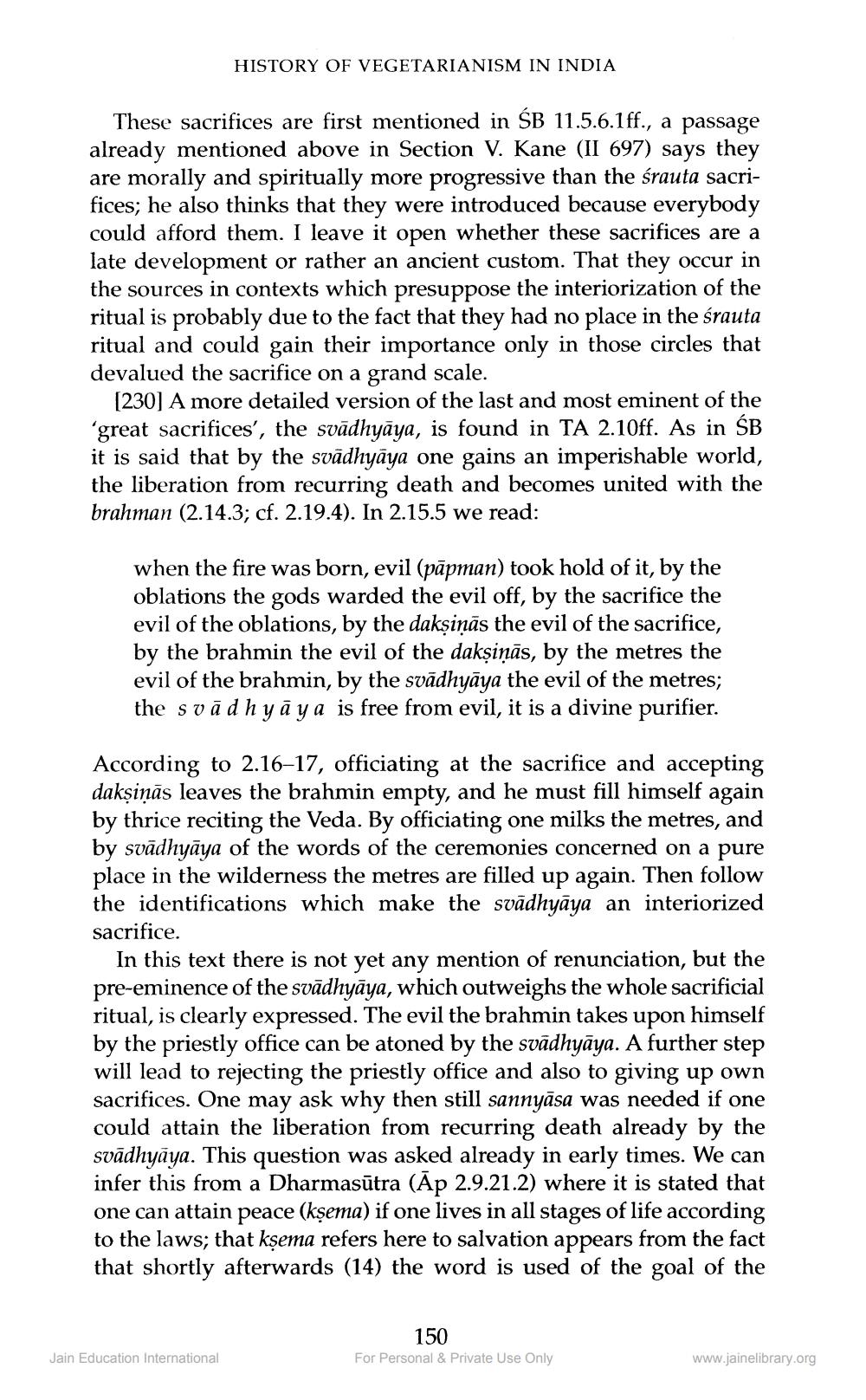________________
HISTORY OF VEGETARIANISM IN INDIA
These sacrifices are first mentioned in SB 11.5.6.1ff., a passage already mentioned above in Section V. Kane (II 697) says they are morally and spiritually more progressive than the śrauta sacrifices; he also thinks that they were introduced because everybody could afford them. I leave it open whether these sacrifices are a late development or rather an ancient custom. That they occur in the sources in contexts which presuppose the interiorization of the ritual is probably due to the fact that they had no place in the srauta ritual and could gain their importance only in those circles that devalued the sacrifice on a grand scale.
[230] A more detailed version of the last and most eminent of the 'great sacrifices', the svādhyāya, is found in TA 2.10ff. As in SB it is said that by the svādhyāya one gains an imperishable world, the liberation from recurring death and becomes united with the brahman (2.14.3; cf. 2.19.4). In 2.15.5 we read:
when the fire was born, evil (pāpman) took hold of it, by the oblations the gods warded the evil off, by the sacrifice the evil of the oblations, by the dakşiņās the evil of the sacrifice, by the brahmin the evil of the dakşiņās, by the metres the evil of the brahmin, by the svādhyāya the evil of the metres; the svād hyāya is free from evil, it is a divine purifier.
According to 2.16-17, officiating at the sacrifice and accepting dakşiņās leaves the brahmin empty, and he must fill himself again by thrice reciting the Veda. By officiating one milks the metres, and by svādhyāya of the words of the ceremonies concerned on a pure place in the wilderness the metres are filled up again. Then follow the identifications which make the svādhyāya an interiorized sacrifice.
In this text there is not yet any mention of renunciation, but the pre-eminence of the svādhyāya, which outweighs the whole sacrificial ritual, is clearly expressed. The evil the brahmin takes upon himself by the priestly office can be atoned by the svādhyāya. A further step will lead to rejecting the priestly office and also to giving up own sacrifices. One may ask why then still sannyāsa was needed if one could attain the liberation from recurring death already by the svādhyāya. This question was asked already in early times. We can infer this from a Dharmasūtra (Ap 2.9.21.2) where it is stated that one can attain peace (kşema) if one lives in all stages of life according to the laws; that ksema refers here to salvation appears from th that shortly afterwards (14) the word is used of the goal of the
150 For Personal & Private Use Only
Jain Education International
www.jainelibrary.org




